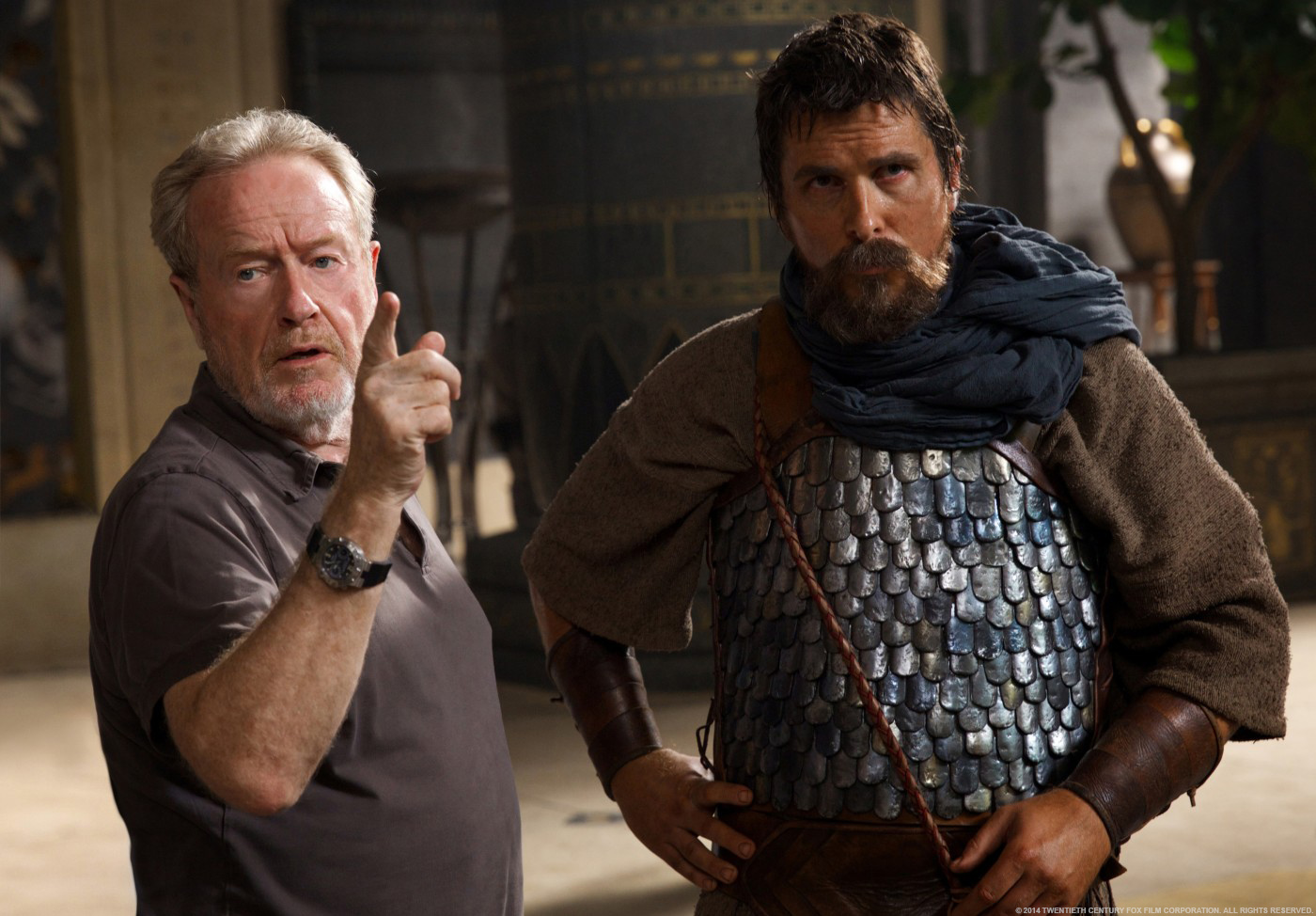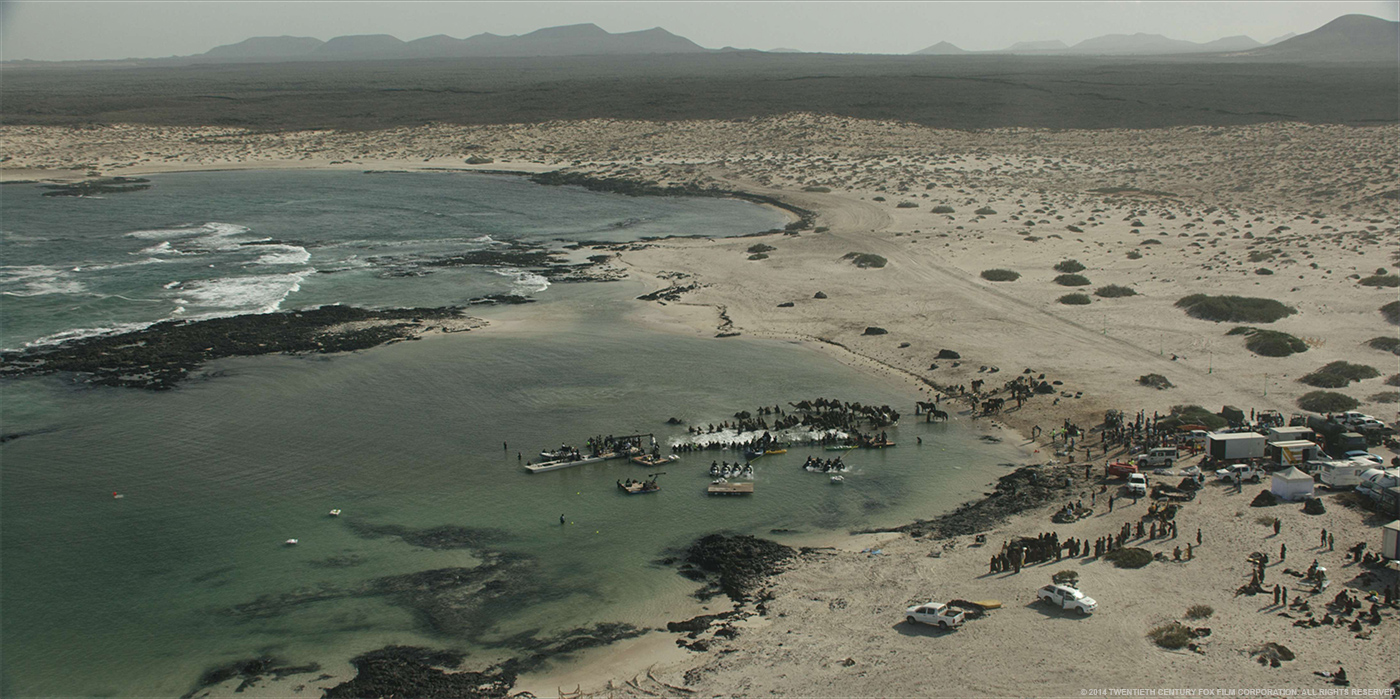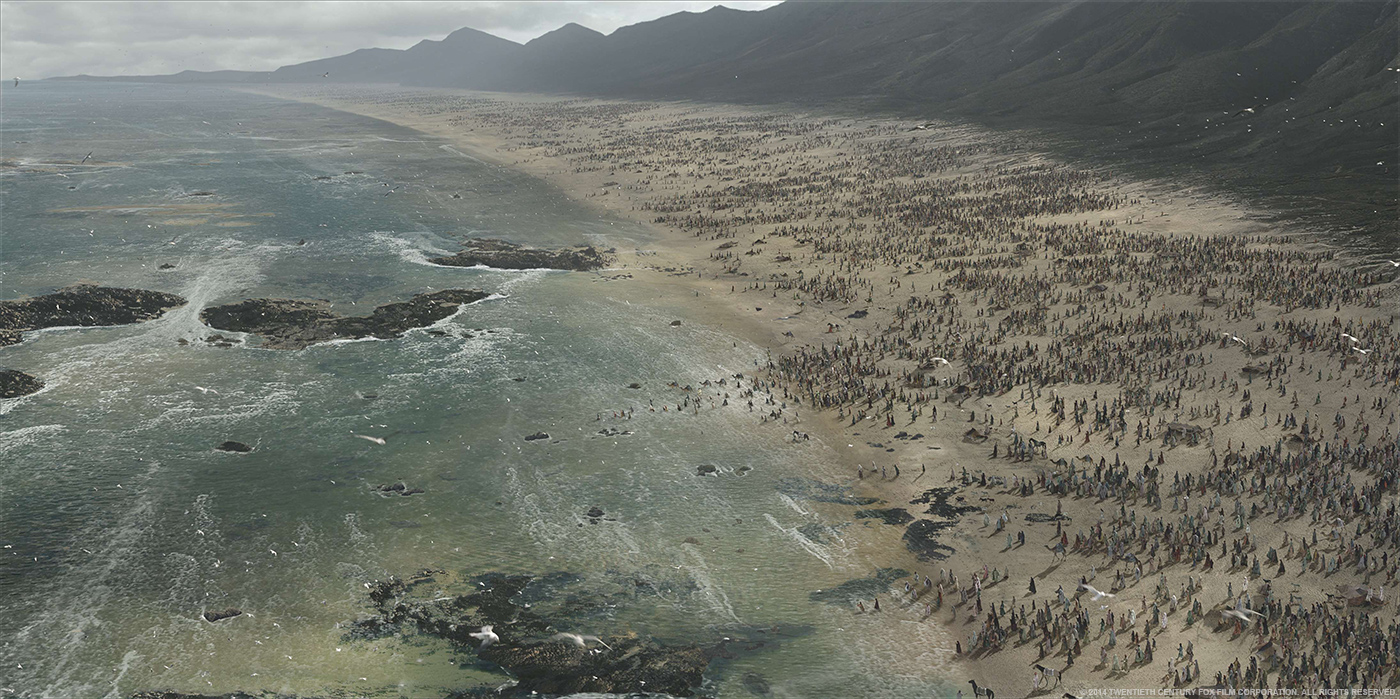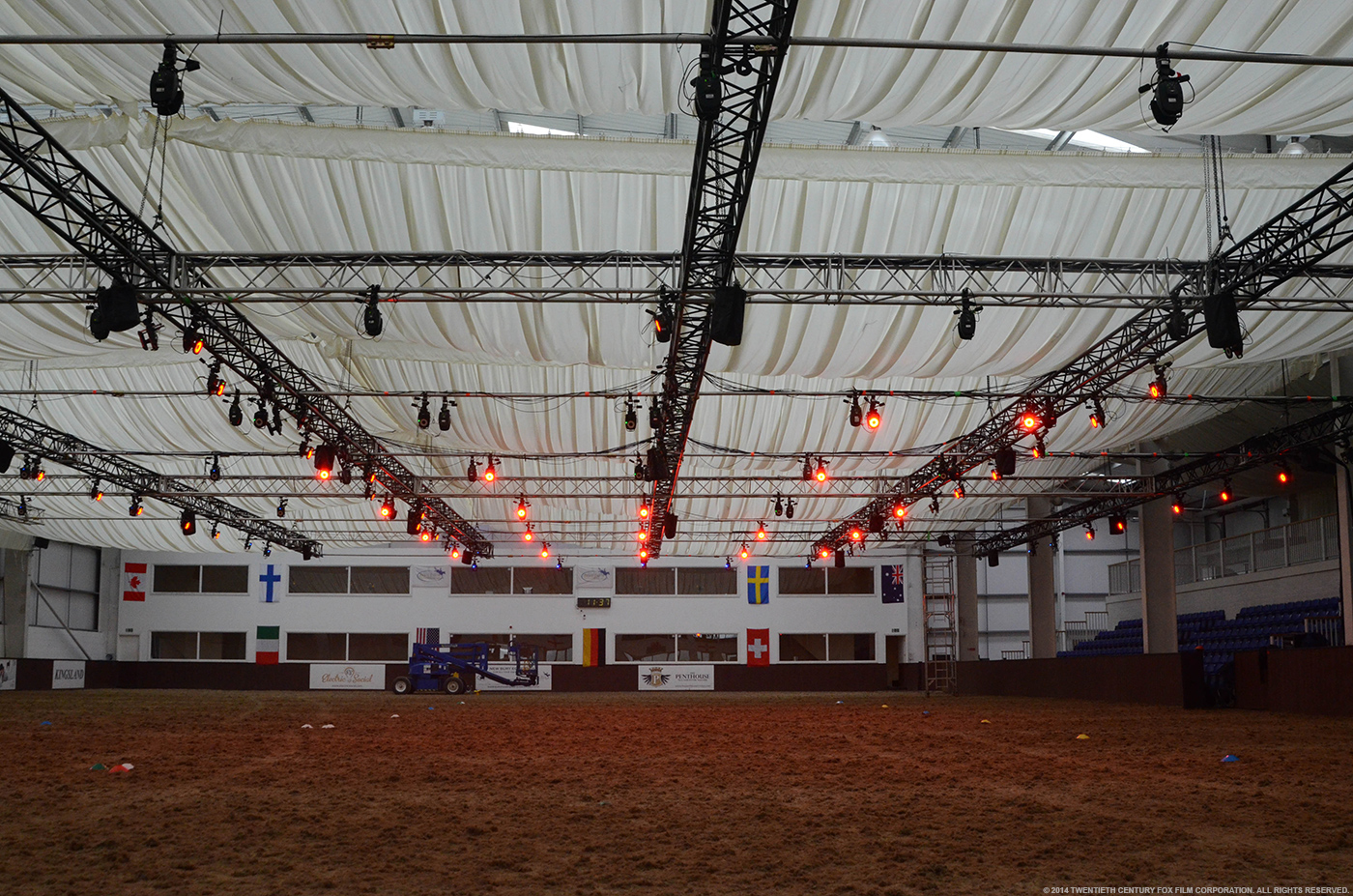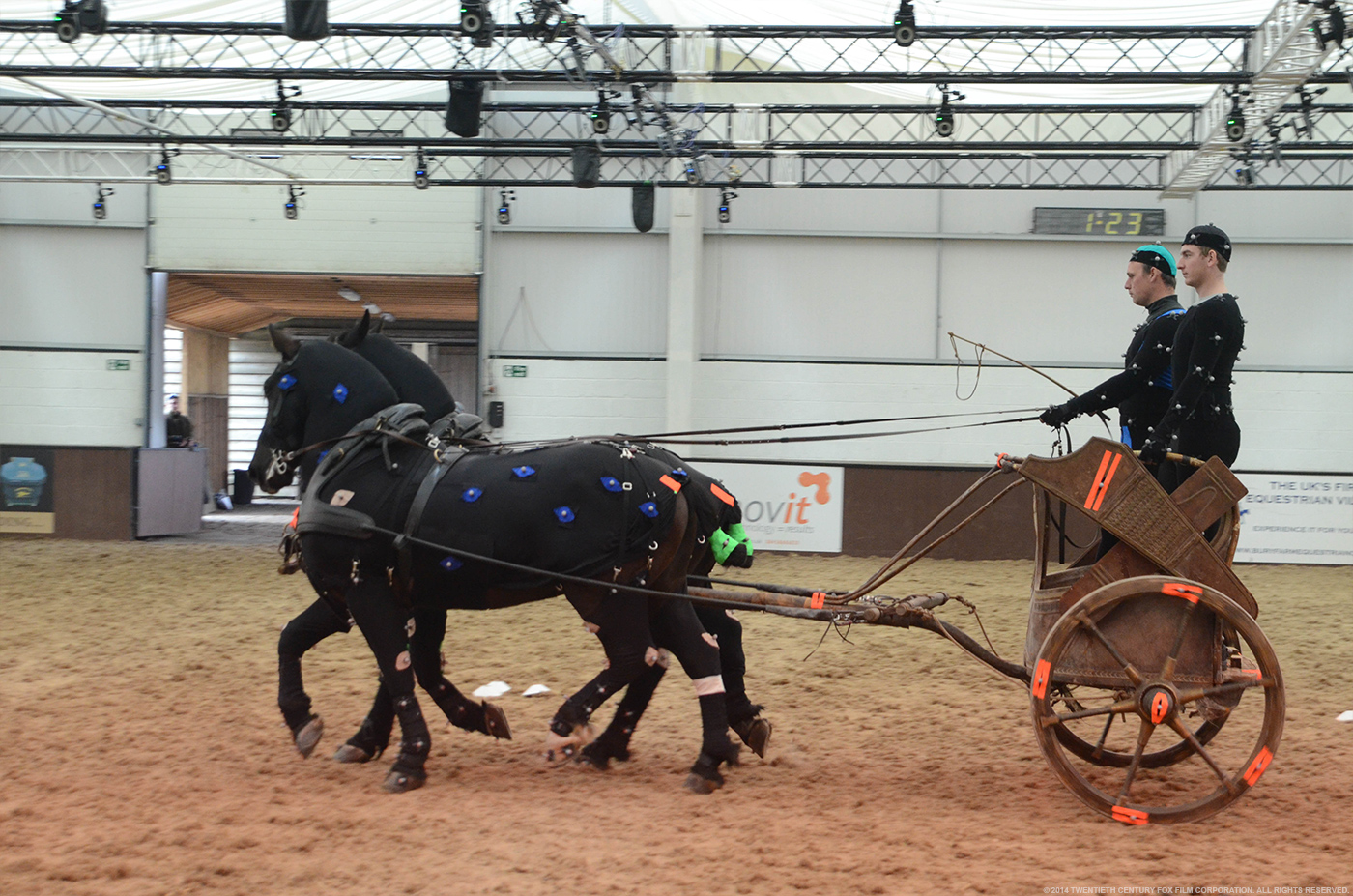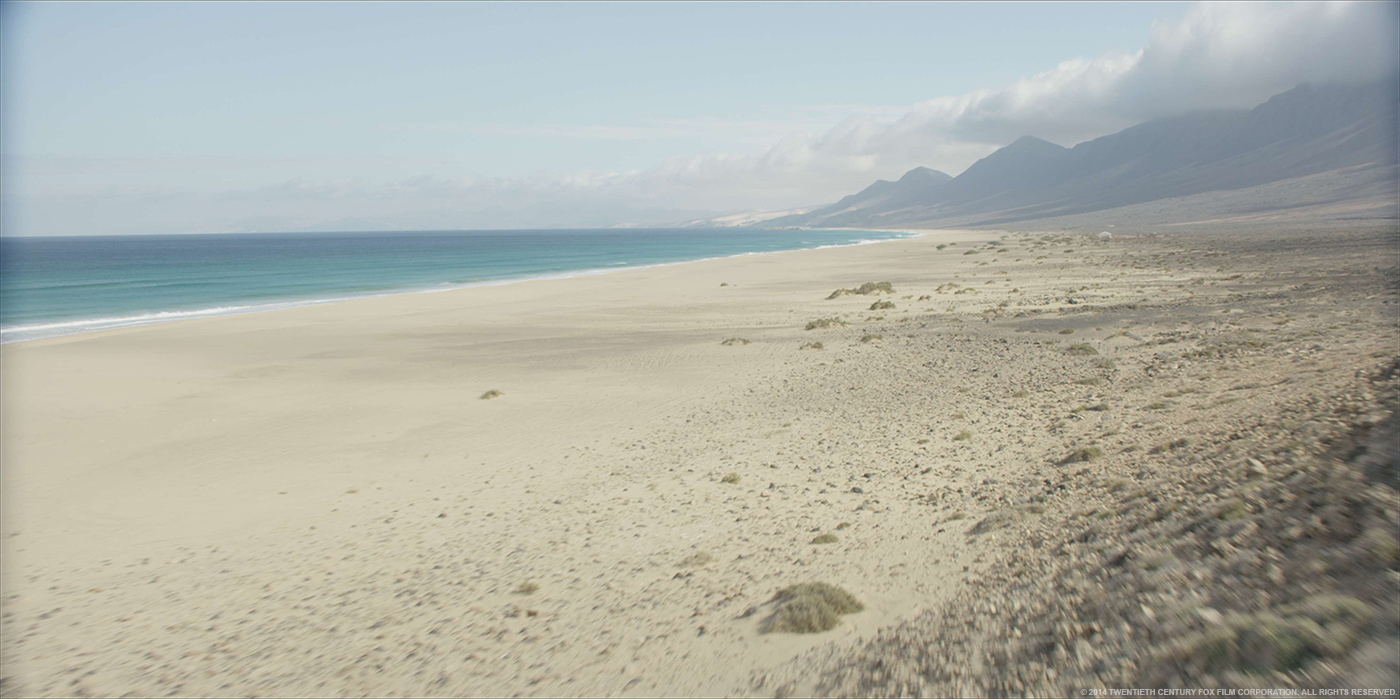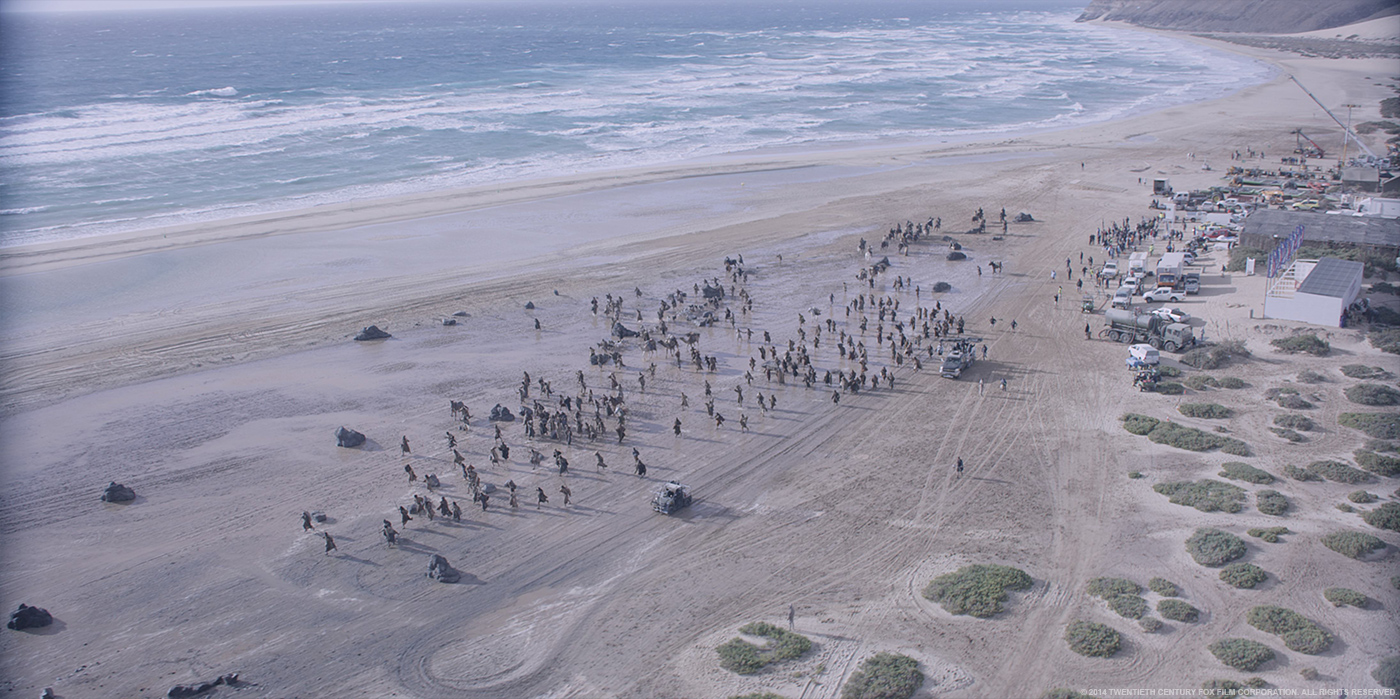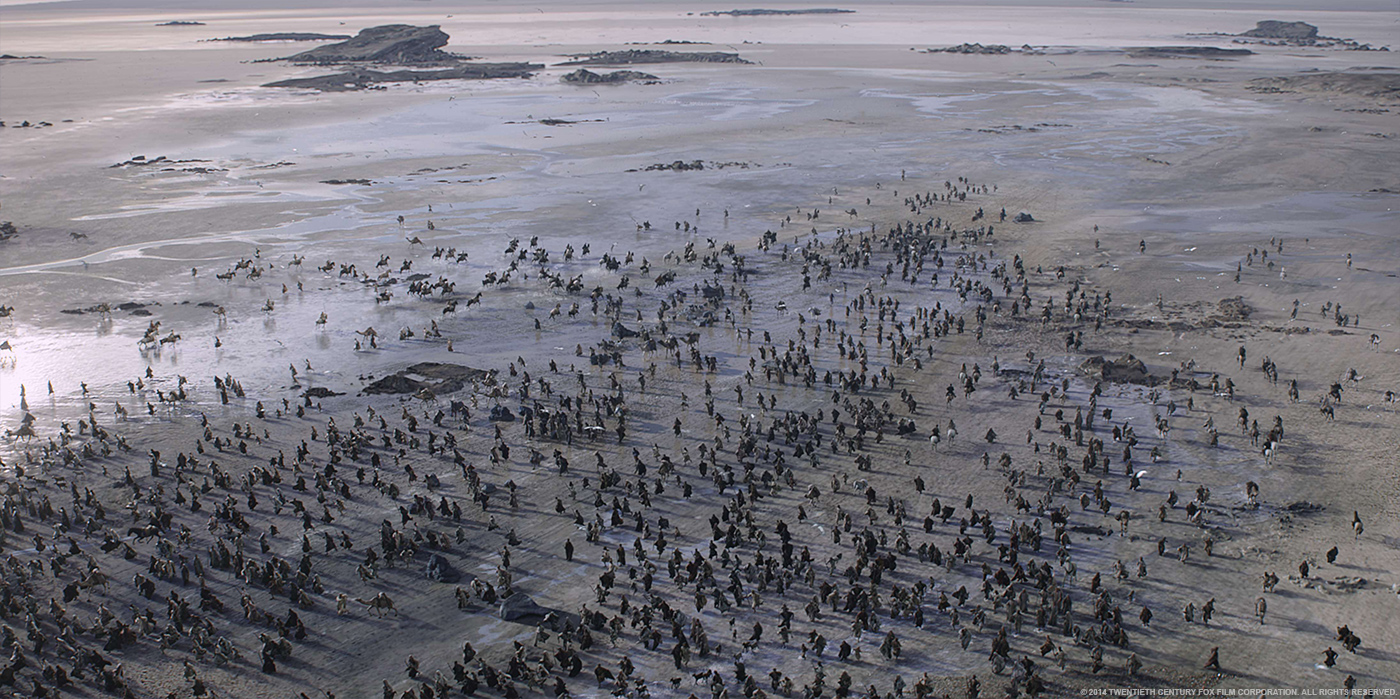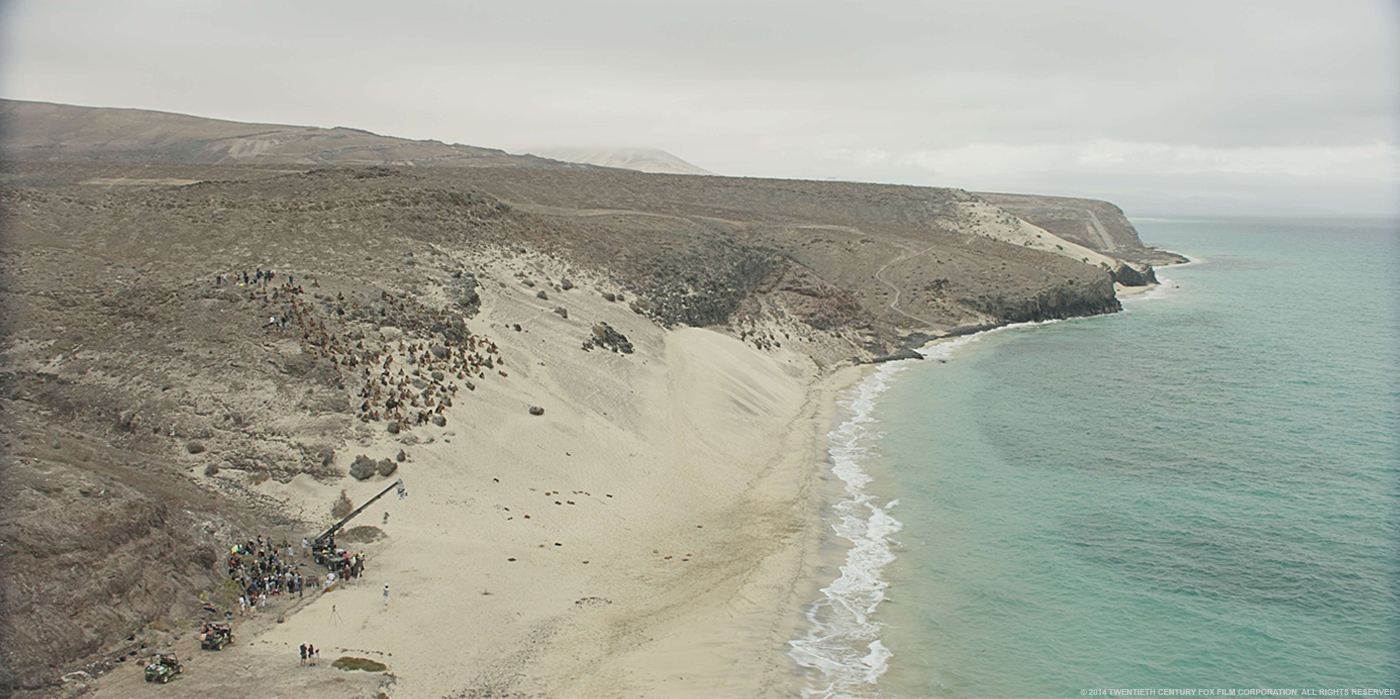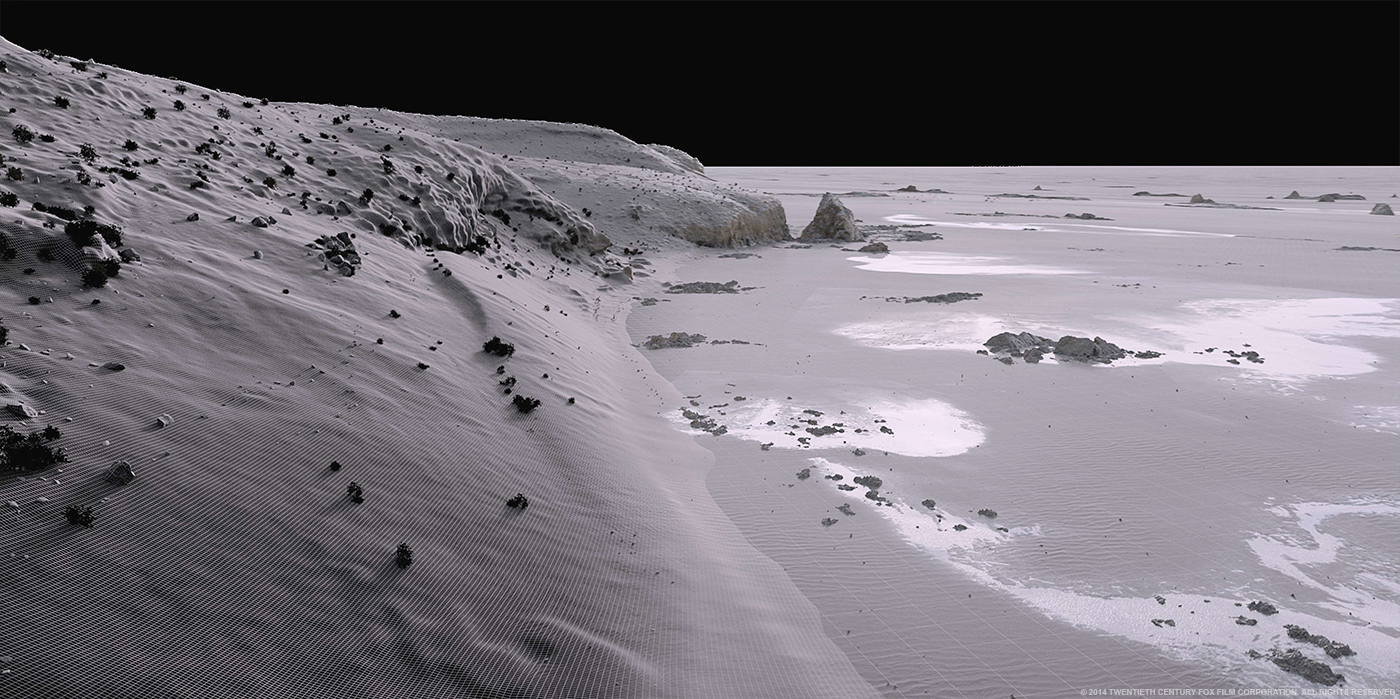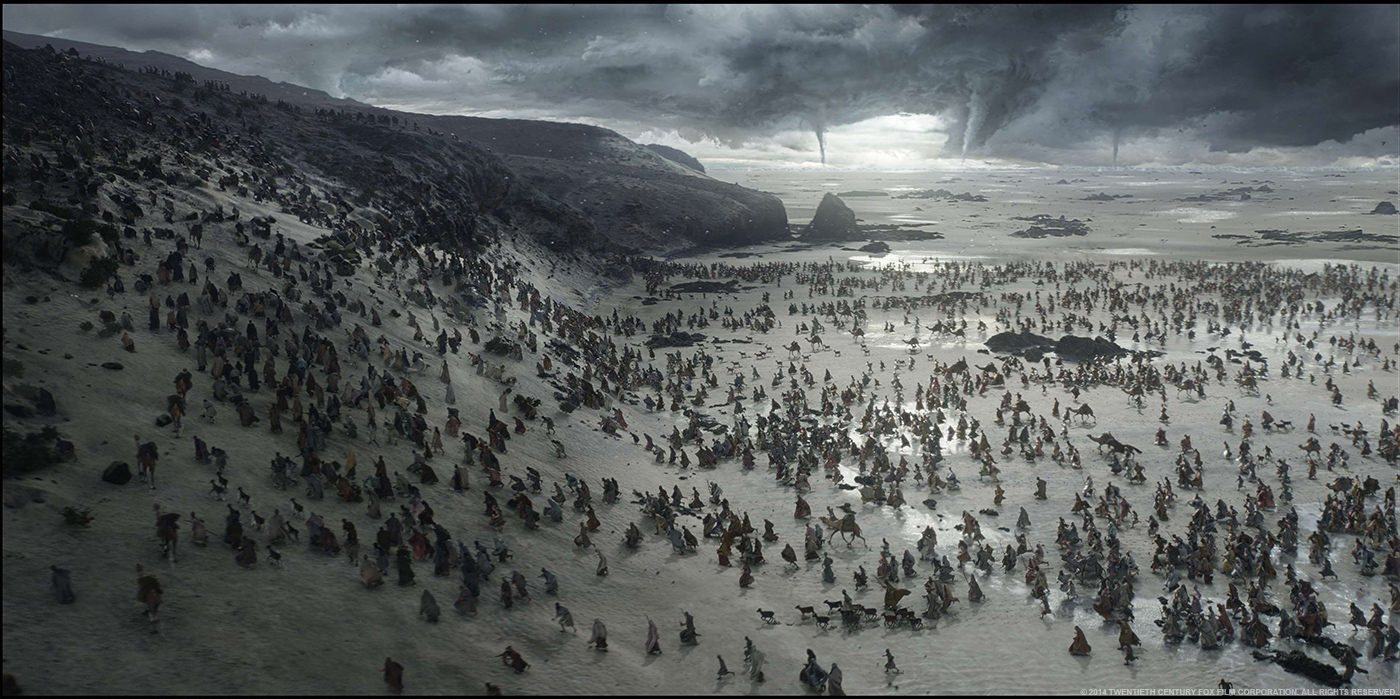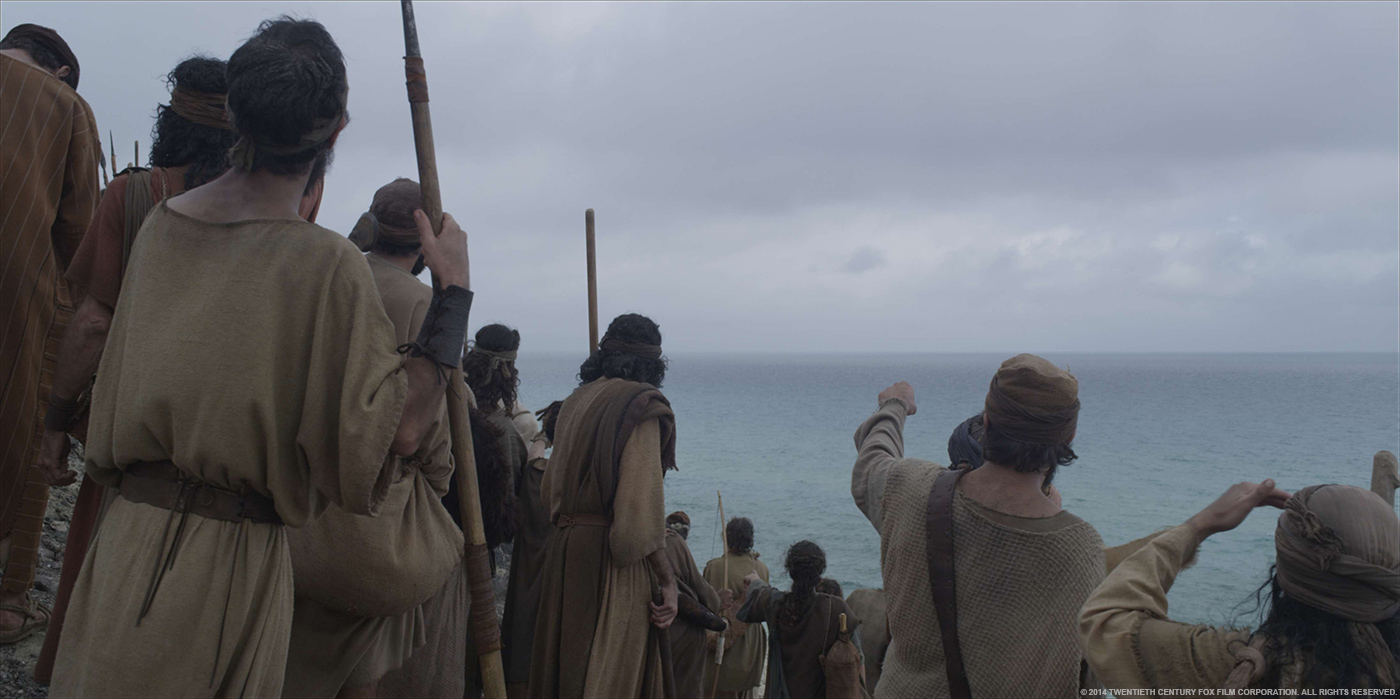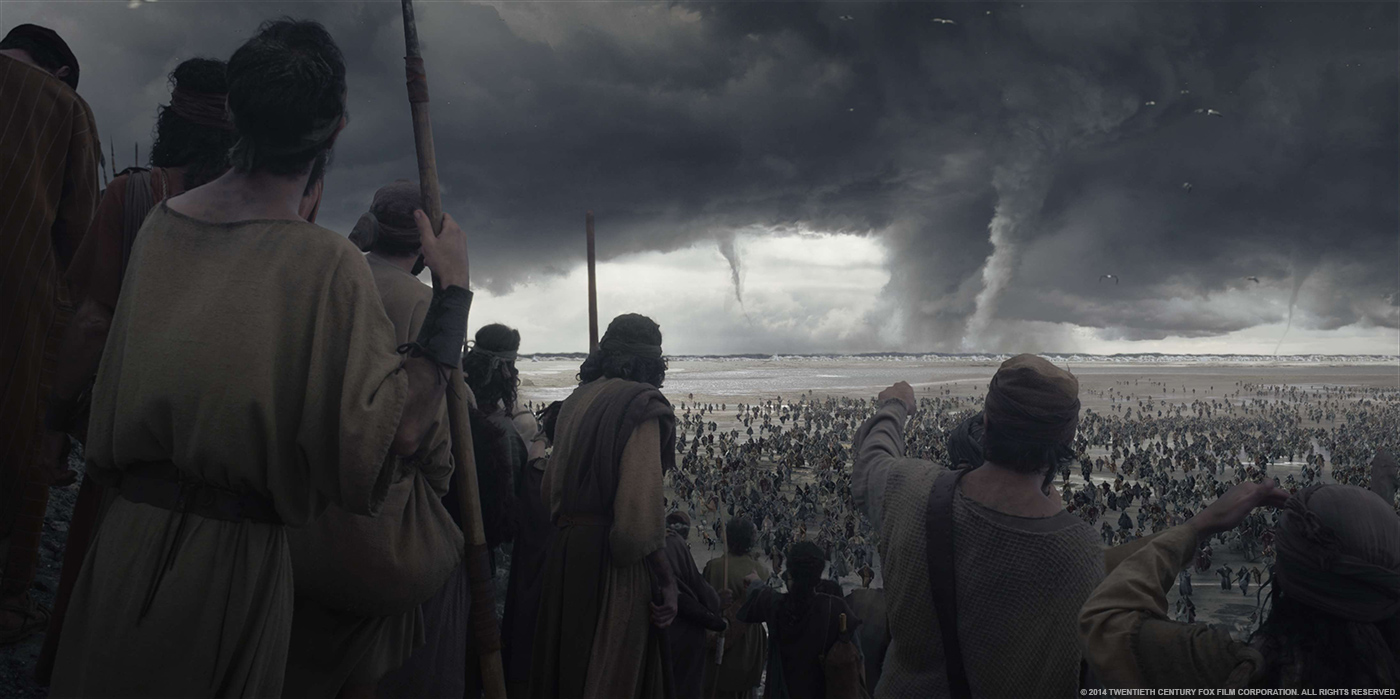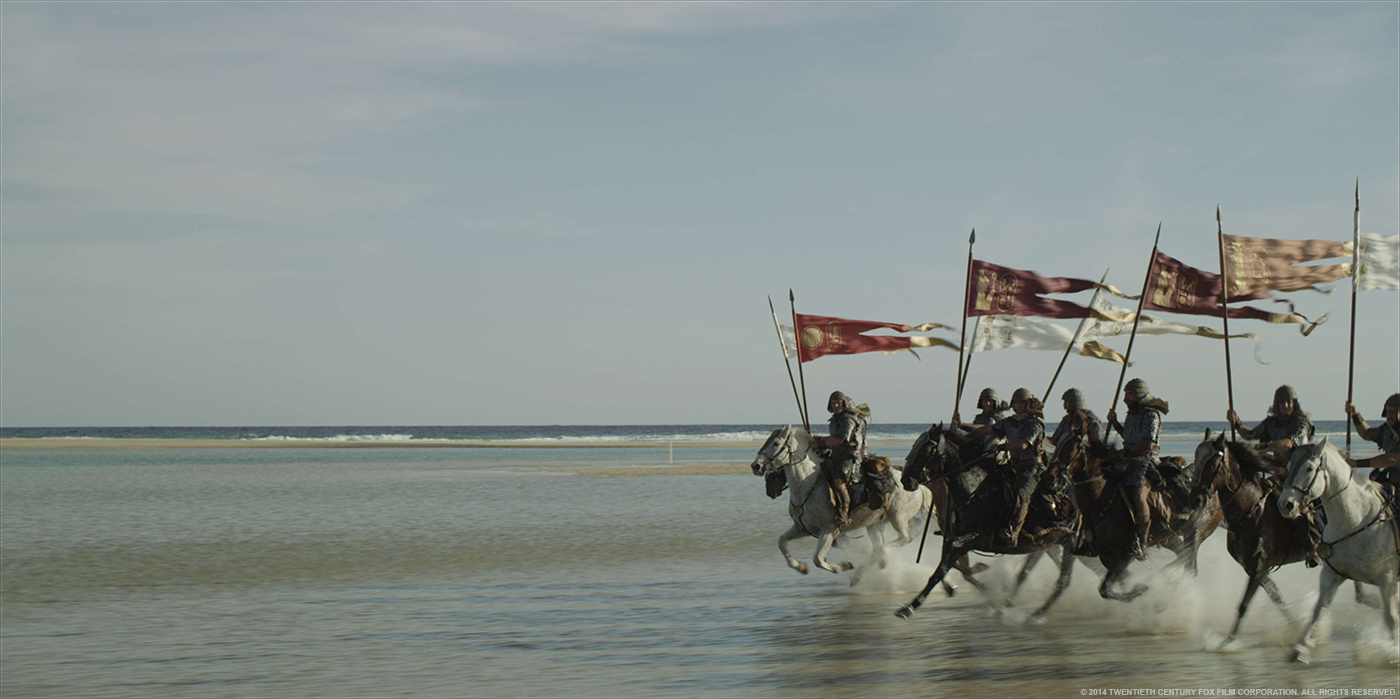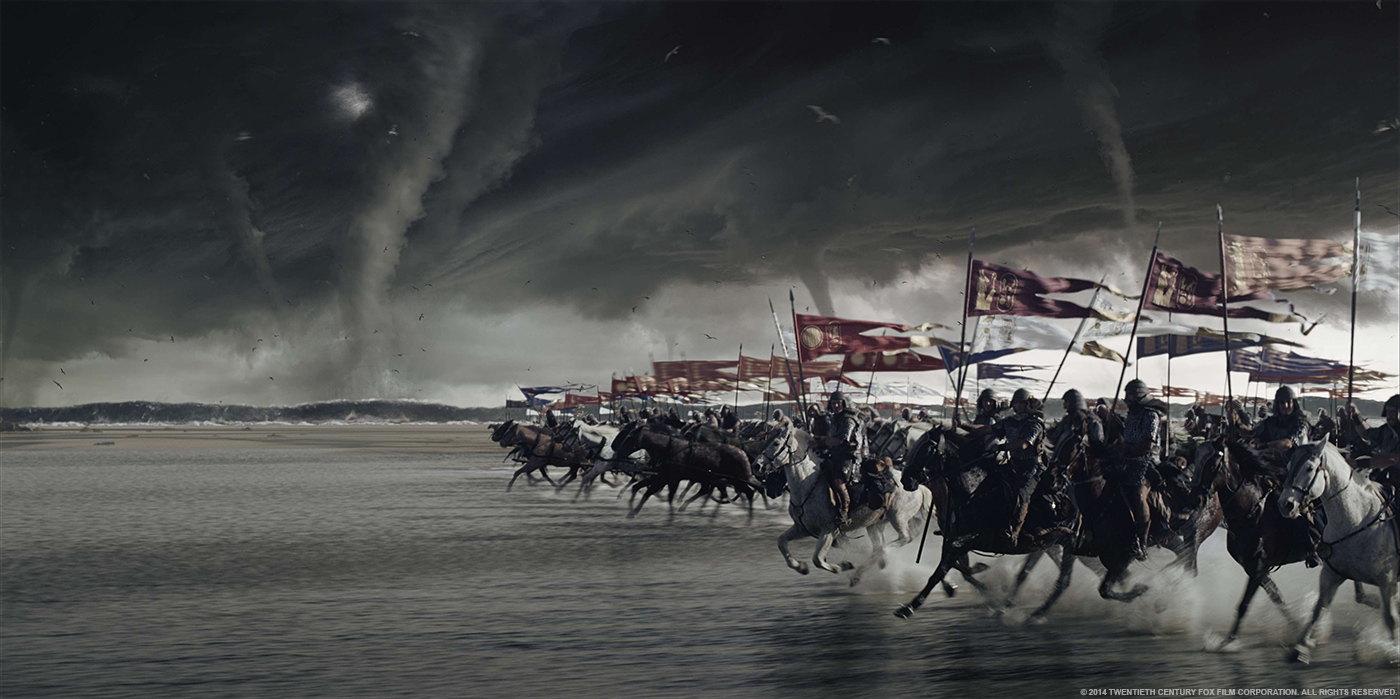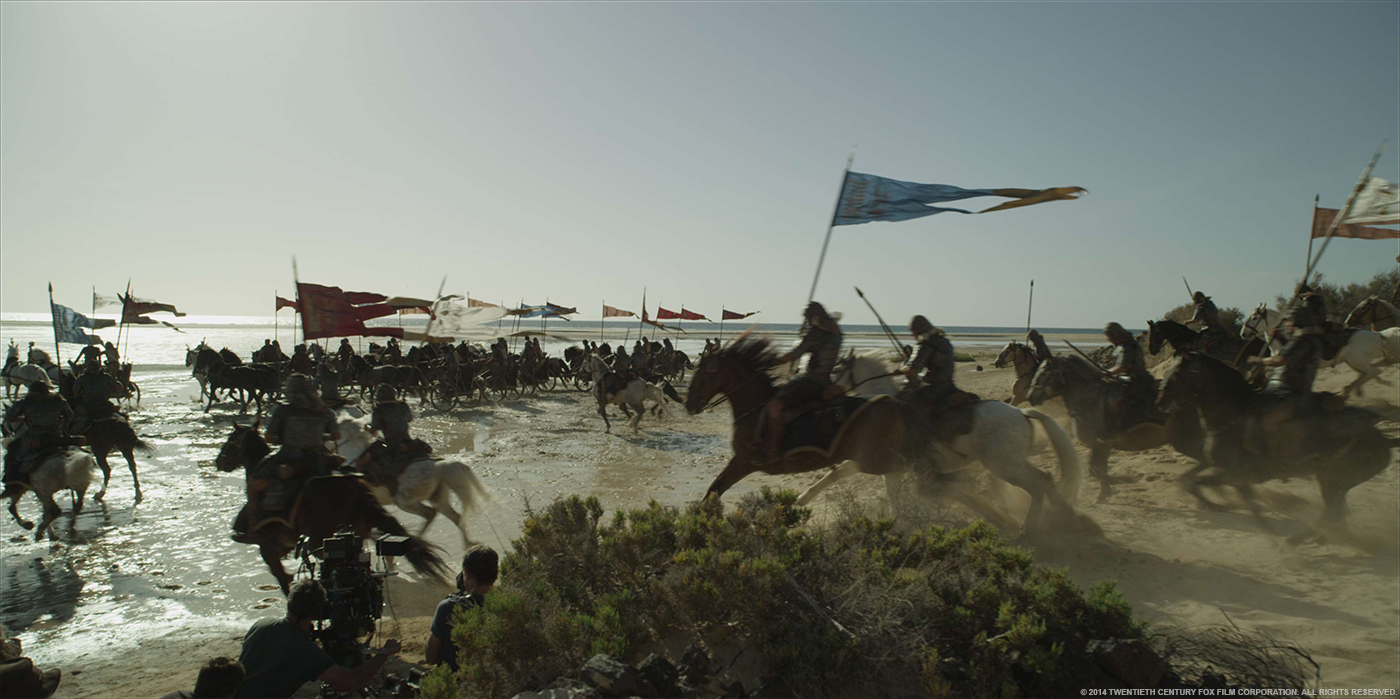In 2013, Jessica Norman had explained in details the work of MPC on WORLD WAR Z, she is now back to talks about her work on the new film by Ridley Scott, EXODUS – GODS AND KINGS.
How did you get involved on this show?
I got involved during pre production on the show. I really liked the ideas and ways that the wonders were depicted as extreme but possible natural phenomena.
How was your collaboration with director Ridley Scott?
It’s great to work with a director that has got such a strong vision. Ridley knows exactly what he wants and how to realize it.
What was his approach about the visual effects?
He started off with concept drawings and provided us with reference images that gave us a clear direction. Using the references he would often pushing for even more dramatic skies and more birds!
What are the sequences made by MPC?
MPC worked on the Battle of Kadesh sequence, various complex crowd scenes throughout the movie including a 400,000 Hebrew crowd, the Egyptian army pursuing them as well as some shared shots with Double Negative where we added the Egyptian army into their environments. MPC also created the Mountain Collapse scene as well as the majority of the Red sea sequence.
How did you work with the Production VFX Supervisor Peter Chiang?
We worked closely with Peter during filming and later in post. The review process changed through the project. At the start Peter and his team would visit MPC to review the shots, later in the show we would cinesync sessions, and towards the end of the show, to save time, we sent material for Peter to review at his office, and follow up with cinesync when there were questions.
Can you describe one of your typical day on-set and then during the post?
I spent a few weeks on set in Spain for the Battle of Kadesh. Shooting the fight scene was exhilarating and exhausting at the same time. For the big battle shots 10 cameras were typically used on each setup. The camera operators were hidden in tents and dressed up as soldiers. On many setups the takes were running for minutes, all cameras capturing slightly different actions. For the Red Sea scene we spent a month on various beaches in Fuerteventura. I also got the opportunity to do a photo shoot on Sierra Nevada, climbing over glaciers with an amazing view.
Back in the office it’s all very different. I worked closely with MPC CG Supervisor Max Wood. We have worked together on many projects and tend to split up daily sessions of the various departments between us. We do key shot and sequence dailies together. Towards the end of the show I spent more time with our compositing team, lead by Comp Supervisors David Griffiths and Lev Kolobov.
How did you handle the Battle of Kadesh sequence?
The work for the scene included Egyptian and Hittite armies with horses and chariots, camp extensions, environment augmentation as well as dust, fires, explosions and thousands of arrows. The majority of shots, including the charging Egyptian army shots combine a live action army with CG crowd extensions. The crowd work included Egyptian and Hittite army with horses and chariots as well as various other fight vignettes. In some shots we extended the camp and fight actions using live action green screen elements, shot on Black Magic cameras during the shoot. The mountain that towers behind the camp was created using photography from Wadi Rum in Jordan. Extensive roto was needed to combine all elements, which was a challenge due to all of the smoke and dust that was created on set.
Can you tell us more about the mocap process for the horses?
We worked with Audiomotion Studios for all of the mocap for the show. To capture horse and chariot actions including turns and getting up to speed, we had to use a capture volume that covered a total area of 4.300 sq feet (400 meters square), one of the largest volumes in the world. The horse had special motion capture suits made for them to allow us to capture the same level of detail as we would a human.
For the horse and chariot actions we had to work out the capture volume requirements early on, this involved calculating the speed of travel of the fastest horses with a chariot attached and included space for the horses to accelerate and stop from maximum speed. We then started to calculate their turning circle as we also needed to capture arced cycles.
How did you created the various armies on this show?
We did various photo booth sessions during the shoot where we captured textures of a large group of performers. Propshop and 2h3D scanned actors, performers, props and weapons. All assets where built based on this reference material, with some texture variation for added value.
Can you explain about the mountain collapse and the use of ALICE on this sequence?
The scene was shot across three different locations. One of the challenges was to make it all look like one place. For the main location, Cofete mountain, there are many shots where we had to alter the width of the road, and the steepness of the slope. Ridley wanted it to look very dangerous.
We used ALICE, our proprietary crowd tool, combined with Papi, MPCs rigid body dynamic solver for shots when the Egyptian army crashes into each other. Through a sequence of shots we mixed live action plates with environment augmentations, stunt performances with cg doubles or horses and in some shots full cg action. Our Crowd Supervisor Marco Carboni started to test the collision setups during pre production, which helped to guide the shoot. The majority of the movement and animation of doubles and horses falling comes from ALICE using Papi with some minor tweaks done in animation.
We used MPCs in house destruction tool Kali to crack and collapse the mountain. Large and small mountain pieces mixed and collided with ALICE agents crashing into each other and falling down the mountain edge. Our environment team built the mountain and also created the interior surfaces revealed by the falling pieces. Many fx and live action dust and smoke elements were mixed into the mayhem in compositing.
Did you received specific indications and references for the Red Sea?
Ridley did a drawing showing the shape of the crashing wave early on and the production art department did very moody concept images with a tall crashing wave and foreground crowd. We did some further concept work at MPC to work out the elements that made up the wave. Previs from The Third Floor was used as a shooting guide and was a very important and a valuable tool to realize the scene.
How did you approach this impressive sequence?
There were many different challenges in the scene. Almost every shot needed heavy environment and crowd work combined with complex rotoscoping. We started work on key shots to establish the look at various points through the scene.
For the wave we made a plan for the various stages that we needed to develop. Starting with layout and animation to tell the story of where the wave is at, how tall it is, how fast it travels and how that works with the story and drama. Various techniques were tested and used for the waves surface, blow back, break water and the churning water that travels in front of the wave.
Can you explain in details about the creation of this sequence?
Environment Supervisor Sebastien Gourdal and his team had the huge task of combining various beach locations to create the sequence. Plates with environment alterations and enhancements were cut with lots of full cg environment shots. The ground plane was augmented to create an undulating surface with rocks and puddles for our cg crowd to travel across. The weather gets gradually worse through scene with moving clouds and changing skies. FX renders and digital matte painting layers for clouds and tornados were combined in compositing to create a ballet of tornados. Ridley wanted a really dramatic backdrop with extreme cloud formations and contrast to set the scene for the huge wave approaching.
Hundreds of extras were on location in Fuerteventura for the large crowd shot, but the majority of shots still have large cg crowd extensions. The 400 000 large cg Hebrew crowd was made up of men, women, children, wagons and livestock. We even created animation cycles for the goats to jump over our environment rocks to create variation in movement and interest.
The compositing team supervised by Lev Kolobov and David Griffiths did a fantastic job bringing the elements together, working closely with all departments including rotoscoping. Roto of crowds is typically hard, roto of riding crowds with horses in stereo is harder. A combination of techniques was used, including the painting out of highlights on fg elements for better keying.
At the beginning of the Red Sea scene we see the sea draining due to the tsunami. For some shots it was necessary to have the rushing water interact with the actors. To create this effect SFX used jetskies out of frame to push the surface of the sea in front of the camera. It worked successfully but would dissipate after a short distance and has to be finished with a cg water surface.
How did you handle the huge wave?
The key was to make the wave look gigantic with really fine detail and move at a convincing speed.
Foam details got smaller and smaller and we kept on adding more and more detail to the white water. The brief was to create a wave with Hawaiian blue top and churning white water at the base with some sand and debris.
We blocked the positioning of the wave a few times. With the wave traveling too fast it was hard to believe why the characters didn’t get hit straight away, but at the same time the wave needed to feel fast and powerful. In most shots the wave travels at 47mph, not because of any scientific reasons, just because it worked the best in the cut. For action and camera reasons the speed obviously had to vary in a few shots with the wave being a lot faster or slower. It is a very unusual sight, a 160ft tall wave traveling forward with only some churning water in front. As it is such a huge water mass traveling forward the key was to vary the front line of the wave with some parts being further forward and with some parts rising and breaking.
Can you tell us more about the water simulations and FX creation?
We used an animation rig with large and small scale controls to create and control the shapes of the wave. This output two different surfaces to our FX team. One surface had the speed of the face of the wave rising up and the other was fixed along the crashing lip of the wave. This allowed FX to be able to calculate the velocity of the surface but also to have a constant surface to calculate areas of emission.
Once the shape and size of the wave was working we started on the water components of the wave. Igor Jovanovic and Davide Sibilia supervised our FX team and Scott Palleiko supervised the lighting team. A few different techniques were used. For the majority of shots we displaced the surface using a custom Tessendorf deformer in lighting, this gave us quick iterations and a consistent look, i.e. we didn’t have to worry about the speed or size of the wave changing and causing us to re-simulate an incredibly large surface. This still allowed us to pass a deformed surface to FX to simulate spray etc from. For the closest shots we used Flowline to calculate the surface. This gave us better connection between the emitted elements and the surface.
Flowline was used to create breaking and churning water. Foam was created in Flowline but for extra detail and art direction a lot of foam was added through environment elements passed to comp. We worked with Scanline FX, the creators of the software, on some of the shots. We shared a cached version of the wave animation and sent environment renders with crowd for Scanline to add the wave to.
Many birds are involved in this sequence. Can you tell us more about it?
Through the scene we added over 300,000 crowd birds that are attracted by the fish that gets exposed with the draining of the sea. The birds helped to add extra frenzy and drama to the scene and worked as an extra atmospheric layer. Typically we would add a lot of dust to most large crowd shots, this time we added birds.
How did you split the work between London and Montreal?
Montreal worked on the Battle of Kadesh scene. Initial blocking of the scene was done in London, as well as all the crowd work. Montreal handled cloth simulations and lighting of the crowd as well as everything else from that point. VFX supervisor in Montreal was Arundi Asregadoo. It was a challenge to share the crowd work, but syncing and interaction between the two offices worked out really well. Chris Bending was one of MPC’s Crowd Lead in London and worked closely with Arundi and his team including CG Supervisor James Rustad and 2d Supervisor Nicolas Chevallier.
What do you keep from this experience?
The teamwork. It was a hard show, but I got to work with some great people.
How long have you worked on this show?
I worked on the show for just over a year, including pre production and shoot
How many shots have you done?
MPC did just over 500 shots for the movie. Around 450 shots included environment and crowd work.
What was the size of your team?
787 across all sites.
What is your next project?
Still early days…
A big thanks for your time.
// WANT TO KNOW MORE?
– MPC: Dedicated page about EXODUS: GODS AND KINGS on MPC website.
© Vincent Frei – The Art of VFX – 2015


